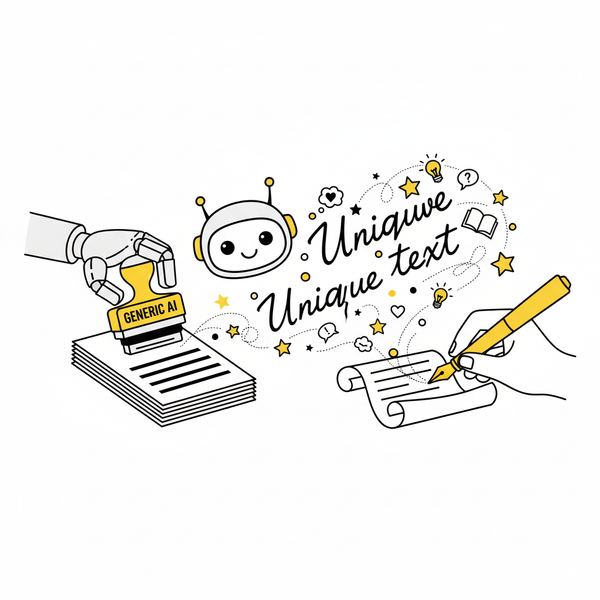The Power of Configuration in AI Storytelling
Transform storytelling through structured configuration files that organize narrative elements and guide AI output.

In today's rapidly evolving landscape of AI writing tools, platforms that offer structure and guidance stand out from the crowd. One such platform making waves in the creative writing space is our own AIStoryHub, which takes a unique approach to AI-assisted storytelling through its robust configuration system.
What Makes AIStoryHub Different
While many AI writing assistants function as simple text generators, AIStoryHub has developed a framework that treats storytelling as a structured process. At the heart of this approach is a comprehensive system of configuration files that not only organize story elements but also guide the AI's generation capabilities in specific, intentional ways.
Inside the Configuration System
Each story in AIStoryHub contains multiple configuration files that serve different purposes, creating a cohesive environment for both human creativity and AI assistance. Let's explore the key components of this system:
Story Organization Files
The platform organizes stories with clear categorization, including:
- Characters
- Conflicts
- Events
- Locations
- Plotlines
- Themes
- Worldbuilding
- Scenes
This structured approach helps writers track all necessary elements of their narrative, ensuring nothing falls through the cracks during the creative process.
AI Generation Guidance
What truly sets AIStoryHub apart is its sophisticated approach to controlling AI output. The platform includes several configuration files specifically designed to guide the AI's generation process:
1. System Prompt Configuration (config.ai)
The default system prompt instructs the AI to:
- Write clear, descriptive documentation in paragraph form
- Provide complete content that reads naturally
- Avoid questions or suggestions for follow-up
- Avoid narrative prose except when specifically requested
This creates consistency across all AI-generated content while keeping the focus on document-style outputs rather than creative liberties.
2. Element-Specific Prompts
Different story elements receive tailored instructions:
- Character descriptions should focus on physical appearance, personality, background, abilities, relationships, goals, and internal conflicts, avoiding dialogue or narrative scenes
- Location descriptions should document physical features, atmosphere, purpose, notable elements, environmental conditions, and significance
- Plot outlines should document core conflict, major developments, character roles, cause-and-effect relationships, and thematic elements
These specialized prompts ensure that each story component receives appropriate AI guidance.
3. Content Restrictions (config.bannedwords)
To maintain quality and originality, AIStoryHub implements content restrictions through banned words and phrases:
- Prohibited character names (e.g., Chen, Anya)
- Overused words and phrases (like "core," "delve," "in essence," "intricate")
- Transition words to avoid (such as "firstly," "however," "therefore")
- Common phrases to avoid (like "vibrant," "bustling," "out of the box")
- Descriptive words to avoid (including "labyrinthine," "remnant," "enigma")
This helps writers avoid clichés and create more original content.
4. Genre and Style Configuration
The system also includes:
- Genre configuration (in this case, "Cyberpunk Science-Fiction")
- Writing style configuration (set to "Descriptive and Dialogue-heavy")
These settings further refine the AI's output to match the desired narrative approach.
The Benefits of Structured Configuration
This configuration-based approach offers several advantages:
- Consistency: By establishing clear guidelines, the system ensures all AI-generated content maintains a consistent style and quality
- Specificity: Writers can fine-tune exactly how they want the AI to approach different story elements
- Quality Control: Banned words and phrases help writers avoid clichés and create more original work
- Organization: The file structure helps writers keep track of all story components in one place
- Customization: Genre and style settings allow for tailored outputs that match the writer's vision
The Future of AI Storytelling
AIStoryHub's configuration-based approach represents a promising direction for AI-assisted creative writing. Rather than treating AI as a replacement for human creativity, it positions artificial intelligence as a structured assistant that works within defined parameters to enhance the writing process.
For writers looking to experiment with AI assistance while maintaining control over their creative vision, platforms like AIStoryHub offer a compelling middle ground between traditional writing and complete AI generation.
By understanding and leveraging these configuration options, writers can harness the power of AI while still creating stories that reflect their unique voice and vision.




